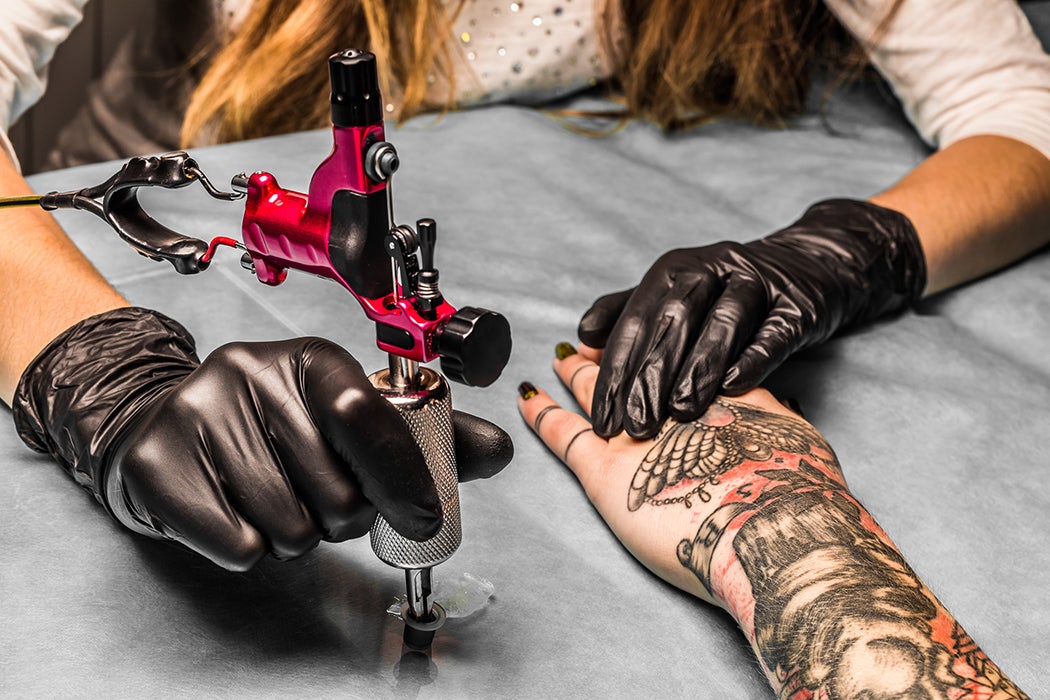Given the popularity of tattoos, one would expect the physical effects to be well known. But in fact, the question has only recently been examined, most recently with studies that suggest that tattoo ink can leach into the lymph nodes, and that tattoos may reduce sweating. Reduced sweating impedes the body’s ability to cool off, potentially presenting problems for anyone who is heavily tattooed and exercising in the heat. But sweating aside, are there long-term risks to tattoos? Nobody really knows.
Many tattoo inks are chemically similar or even identical to commercial pigments used in printers or even paint. Are there serious adverse effects to injecting industrial paint under your skin? Nobody really knows. The largest regulator of food and personal items, the FDA, has authority over pigments used in external-use cosmetics, such as lipstick. Artificial pigments must be approved by the FDA and tested to ensure that they contain approved ingredients, but colors derived from natural sources are not tested at all. In practice, due to limited resources and a belief that cosmetics pose little health risk, approved cosmetic pigments are mostly regulated directly by the cosmetic industry.
There’s loophole, however, large enough for a body suit. The FDA only exercises oversight over cosmetic pigments used externally. Internal use, i.e. permanently inserting pigments into the skin, is not regulated by the FDA at all. In a bizarre catch-22, since the pigments are not FDA-approved for use in tattoos, and only FDA pigments are covered by the industry’s testing scheme, most inks are de facto unregulated (The FDA will act if an obvious health problem is identified). Furthermore, FDA ingredient labeling requirements only apply to products sold directly to consumers. Ink is sold wholesale in bulk to shops, so not only are the inks not FDA-approved, the ingredients are kept secret from users.
That leaves the regulation of tattoos to the states, where there is enormous variability in oversight. Many states, not all, have some regulations regarding the practice of tattooing, but there are few regulations regarding the contents or safety of the ink. Research regarding long-term effects of modern pigments or how pigments react when tattoos are removed is almost completely lacking.
As things currently stand, there is not yet evidence of long term harm to most tattoo recipients, nor does the sweating study provide evidence of risk. While there have been a few infections caused by unsterile ink, licensed artists are mostly conscientious and infection transmission through tattoos is uncommon. (The infection rate is higher in informal settings such as prisons, or friends’ basements.) However, the rate of allergic or other poor reactions has been increasing. Tattooing is an ancient practice, but the modern explosion of tattoo popularity and chemical pigments takes the health risks into unknown territory.







